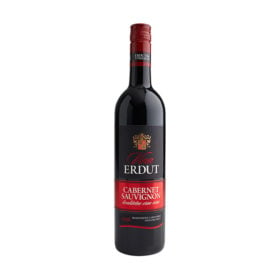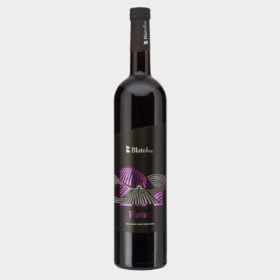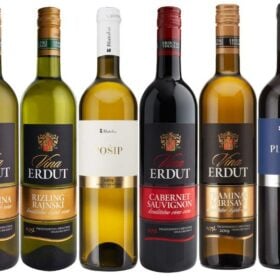Decanting wine is an essential process to obtain the optimum taste and aromaphotos of the wine to reveal. It is an old technique that is still used to taste it Red wine and to separate any sediments that may have formed in the bottle. The process of decanting is not only functional, but it can also be a wonderful addition to any wine lover's presentation.
Wine is a drink that has been drunk and enjoyed by people all over the world for centuries. Serving wine the right way is critical to its flavors and taste aroma's to their full potential. An important step in this process is decanting the wine. Decanting refers to transferring the wine from the bottle to a decanter in order to separate the wine from any sediments and add oxygen to the wine.
Decanting wine not only gives you the best taste, but you can also create a real showstopper when you serve the wine. In this article, we will discuss the basics of decanting wine, as well as the different types of wine that are best decanted. In this article, we'll discuss why and when to decant wine, how best to do it, and how to make sure your wine tastes its best.
Content
Decant wine meaning
Decanting wine simply means pouring the wine from the bottle into a decanter or other suitable container. This technique is designed to separate the wine from any sediments and to aerate the wine, bringing out the flavors and aroma's develop better and drinking the wine becomes a more enjoyable experience. Decanting wine is a timeless practice performed by wine lovers everywhere and remains an important part of enjoying a good wine to this day. glass of wine.
Why and when to decant wine?
Decanting is an important step in serving wine as it preserves the flavors and tastes aroma's of the wine strengthens and improves. Pouring the wine into a decanter can help separate any sediment that has collected in the bottle from the wine. This can be especially important with older wines, as they are more likely to form sediment. Separating the wine from sediments can significantly improve the taste and texture of the wine.
In addition, decanting the wine can add oxygen to the wine. Through the wine contact to bring with oxygen, can the flavors and aromaof the wine develop and blossom. This is especially important with young wines that have not yet had enough time to mature and develop.
Different scenarios when decanting
There are a number of different scenarios in which you should decant wine. The most common reason to decant wine is to separate sediments. This is especially important in older people red wines, because they have a higher risk of sediment formation. If you have a bottle of wine that is several years old, chances are it has sediments in the bottle and decanting is necessary.
Another reason to decant wine is to let young wines breathe and their flavors and aroma's to develop. Young wines can be quite tight and closed when they first come out of the bottle. By decanting and infusing them contact to bring with oxygen, can the flavors and aromaof the wine develop and blossom. This can be especially important in wines with high tannin content, such as Cabernet Sauvignon or Nebbiolo.
Finally, decanting the wine can also have an aesthetic function. Pouring the wine into a beautiful carafe can add a visually appealing element to your table setting and can add to the overall atmosphere and experience of drinking wine.
How to decant wine?
Now that you understand why and when to decant wine, let's discuss how best to do it. Below are some tips for common faults to prevent.
Step 1: Choose the right carafe
Choosing the right decanter is important as it can add to the overall experience of drinking wine. A good decanter should be large enough to hold the entire bottle of wine and wide enough to allow the wine to aerate as you pour it into the decanter. Preferably choose a decanter that is transparent so you can see the color and clarity of the wine as you pour it.
Step 2: Check for sediments
Before you start decanting the wine, check if there are any sediments in the bottle. Place the bottle upright and see if there is a layer of sediment at the bottom of the bottle. If sediments are present, pour carefully to prevent them from ending up in the carafe.
Step 3: Open the bottle of wine
Before you start pouring the wine into the carafe, you need to open the wine bottle and remove the cork. Use a corkscrew to gently pull the cork out of the bottle without damaging it. Be sure to check the cork for signs of damage or schimmel, as this may indicate problems with the wine.
Step 4: Pour the wine into the decanter
Slowly start pouring the wine into the carafe. Hold the bottle as low as possible to the carafe to gently let the wine flow. Try to avoid tilting the bottle too much as this can lead to transfer of sediments from the bottle to the carafe.
Step 5: Let the wine breathe
After pouring the wine into the decanter, let it breathe for a while before serving. The exact time it takes for the wine to breathe depends on the type of wine and its age. In general, younger wines take less time to breathe than older wines.
Step 6: Serve the wine
Once the wine has been allowed to breathe, it's time to serve it. Carefully pour the wine into the glasses and enjoy the enhanced flavors and aroma's.
Tips for decanting wine:
- Make sure the carafe is clean before pouring the wine into it. Residues from previous wines can affect the taste of the new wine.
- Store the bottle of wine upright before decanting it to allow any sediment to settle to the bottom of the bottle.
- Allowing the wine to breathe for too long can lead to oxidation

Decant old wine
- Original price was: 19,98. 13,99Current price is: 13,99. Add to Cart
Old wines are particularly delicate and deserve extra care and attention when decanting. The purpose of decanting an aged wine is to separate it from any sediments and to expose it to oxygen so that the flavors and aromacan develop better. When decanting an old wine, it is important to do so slowly and carefully to avoid aerating or damaging the wine. When opening the bottle, be careful to ensure that any cork residue does not end up in the wine.
When you start decanting, pour the bottle very carefully and slowly, so you don't shake the wine too much and don't get sediments into the carafe. Once you've poured the wine into the decanter, you'll also need to gently let it rest so that the sediments settle at the bottom of the bottle.
When decanting an aged wine, you should also take into account the time it takes for the wine to breathe. Since old wines are more susceptible to oxidation, it is important to let them breathe for a shorter time than younger wines. Don't let the wine breathe for more than half an hour before serving.
Old wines can be somewhat overpowering, especially if not properly decanted. By taking your time and working carefully, you can ensure you get the best flavors and results aroma's of your old wine. With the right approach, you can enjoy your old wine as it was intended: as a beautiful work of art in a glass.
Decanting wine without a decanter
Decanting wine without a decanter can be challenging, but it is possible to accomplish this task with the help of other tools. An alternative method of decanting wine without a carafe is to use a funnel in combination with a fine sieve. Place the strainer in the funnel and slowly pour the wine through the strainer to remove any sediment and aerate the wine.
Another option is to get a big one wine glass used to decant the wine. Carefully pour the wine into the glass, holding the glass by the stem and swirling gently to aerate the wine and separate any sediment. Keep in mind that decanting wine without a decanter requires a little more skill and patience than using a decanter, so be careful and take the time to handle the wine properly.
Croatian wine decant
Croatian wines are becoming increasingly popular among wine lovers due to their unique flavors and high quality. To get the best out of you Croatian wine decanting the wine can play an important role. When decanting Croatian wines, it is important to take into account the different grape varieties and the associated characteristics of the wine.
In general, Croatian wines tend to be rich and full-bodied, with a deep aroma and a complex taste. For these flavors and aromaTo allow it to develop properly, it is advisable to decant the wine before serving.
When decanting Croatian wines, it is important to rinse the carafe well with warm water beforehand to remove any dust or dirt. Then the wine can be slowly poured into the carafe, carefully leaving any sediments in the bottle. It is recommended to let the wine breathe for at least half an hour before serving.
By the Croatian wine decanting you can ensure that the wine opens up completely and all the flavors and aroma's come out well. Whether you enjoy a Plavac Mali from Dalmatia from the winery Blato 1902 or a Graševina from Slavonia, decanting can certainly contribute to an even better wine experience.
Special Croatian wine culture
Croatia has a long history of viticulture and produces some of the best wines in Europe. Croatia's vineyards benefit from the Mediterranean climate, the rich soil and the many hours of sunshine that the country has. Although Croatian wines are less known than those from other European countries such as France or Italy, they are definitely worth exploring. Here are three reasons why you should try Croatia's wines:
- Variety of grape varieties Croatia has an impressive variety of native grape varieties, which are found nowhere else in the world. This means that the wines of Croatia are unique and have their own character. For example, some of the most popular grape varieties are Plavac Mali, Malvasia Istriana and Graševina.
- High quality Croatian wines are known for their high quality and are produced with great attention to detail and artisanal techniques. Many Croatian wine producers use organic and sustainable methods to ensure the quality of the wines. In addition, many wines come from small, independent wineries, making them extra special and unique.
- Wine Routes Croatia offers several wine routes that take you past the beautiful vineyards and wineries of the country. These routes offer a great opportunity to experience the wines of Croatia taste and too teaching methodology about the history and culture of viticulture in the country. Some popular wine routes are, for example, the Peljesac wine route, wine routes of Korcula and the wine route from Istria.
In short, if you are a wine lover and looking for new and exciting wines to discover, then it is definitely worth trying the wines of Croatia. With their unique character and high quality, they are a valuable addition to any wine cellar.
Conclusion on decanting
Decanting wine can be a great way to enhance the flavors and taste aroma's of your favorite wines. By aerating the wine, the aroma's and flavors develop better and you can enjoy a fuller and more complex wine experience. Choosing the right decanter, checking for sediments and pouring the wine carefully are all important steps when decanting wine.
While not all wines need to be decanted, it can be a great way to enhance your favorite wines. So why not give it a try? Order your favorite bottle of wine, pull out a nice carafe and enjoy an enhanced wine experience.
If you're a wine lover and have any tips on how best to decant your wine, let us know in the comments!










